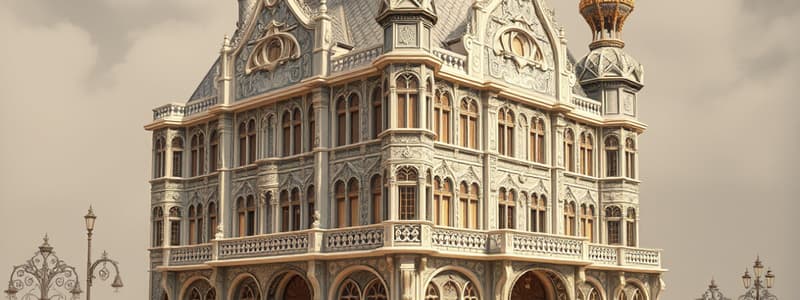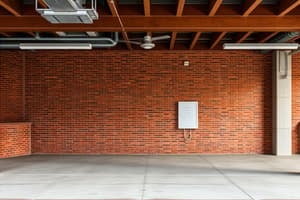Podcast
Questions and Answers
What is the primary purpose of ventilating each room in a structure after a fire?
What is the primary purpose of ventilating each room in a structure after a fire?
- To allow fresh air to circulate throughout the house.
- To prepare the space for rebuilding.
- To reduce the risk of structural collapse.
- To minimize smoke damage to the contents. (correct)
Which action is NOT recommended for customer valuables found in a fire-damaged structure?
Which action is NOT recommended for customer valuables found in a fire-damaged structure?
- Placing items in unmarked boxes for easier retrieval. (correct)
- Carefully wrapping items in protective material.
- Ensuring wet items are dried before packaging.
- Storing photo albums and tapes in a safe location.
What is a key consideration when securing a fire scene to prevent further damage?
What is a key consideration when securing a fire scene to prevent further damage?
- Removing all valuable items immediately.
- Covering all access holes and broken windows with appropriate materials. (correct)
- Leaving the scene without any further assessments.
- Blocking the entrance with debris to deter entry.
Which of the following statements about debris management after a fire is accurate?
Which of the following statements about debris management after a fire is accurate?
When preparing furniture after a fire, what should be done to prevent water damage?
When preparing furniture after a fire, what should be done to prevent water damage?
Flashcards are hidden until you start studying
Study Notes
Packaging a Structure for Loss Control
- Properly packaging a house or structure post-incident is crucial for minimizing damage.
- Complete ventilation of each room is necessary to reduce smoke damage.
- Utilize plastic covers to protect furniture from further damage.
- Wipe water off countertops and wooden furniture to prevent water damage.
- Elevate furniture (block) to prevent direct contact with water.
Debris Management
- Clear excess debris from rooms to enhance cleanliness and reduce traumatic impact.
- Collect debris outside, keeping it away from entrances, and cover with plastic to deter scavenging.
Handling Customer Valuables
- Carefully wrap and box valuables such as photo albums, tapes, and clothing found in closets.
- Clearly label the contents of each box for easier retrieval later.
- Do not package wet items; allow them to dry before boxing to avoid mold and further damage.
Structural Repairs and Safety
- Secure access holes from pulled ceilings, roofs, or walls by “squaring up” edges unless hazardous materials (e.g., asbestos) are present.
- Secure the fire scene to protect structures and contents from looting after fire personnel leave.
Weather and Vandalism Protection
- Cover roof ventilation holes and broken windows with plastic or similar materials to prevent weather damage and deter vandalism.
- Prior to covering broken windows, remove glass shards for safety.
- Use rolled plastic for effective coverage during the loss control process.
Studying That Suits You
Use AI to generate personalized quizzes and flashcards to suit your learning preferences.




